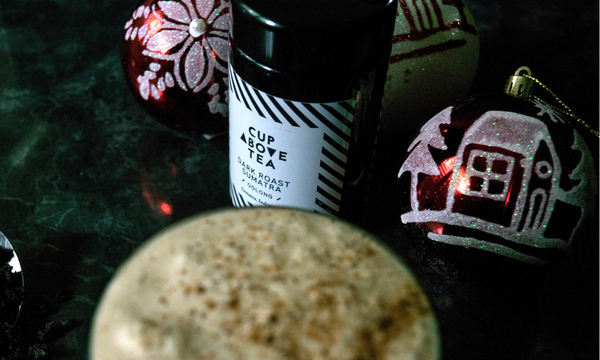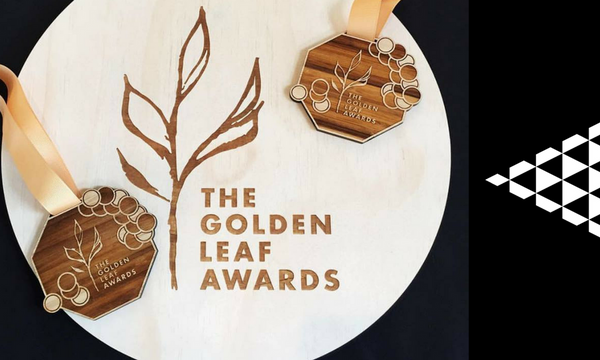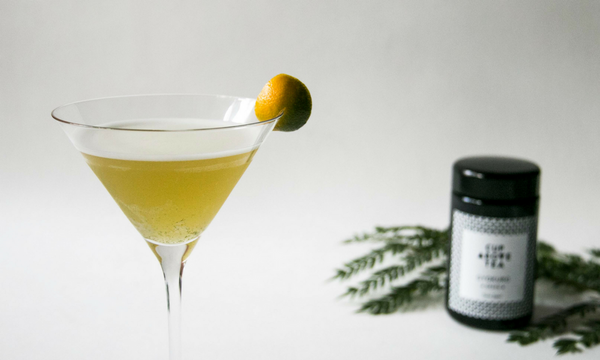Meet the bladesmith whose knives are a cut above

It’s one of the first tools mankind ever produced and since then there’s been no substitute. We use one every day without thinking twice. We couldn’t butter toast, slice cakes, chop fruit, dice vegetables, joint meat or eat our meals without one.
Today, knives have morphed from pure survival tools into a chef’s most trusted utensil. In the stone ages, knives were made by fracturing and shaping rocks. Now they’re churned out on production lines in overseas factories, unless of course you’re lucky enough to own an Aidan Mackinnon knife that is. Then, your knife would be meticulously crafted by hand in a studio in Coburg North, in Melbourne, Australia, by one of the best bladesmiths in the business.
We talk to Aidan Mackinnon about the art of knife making, his passion for craftsmanship and the narratives you uncover in a bespoke hand-made product.
What is it about knives for you?
A knife is our primary interaction point between us and our food. It is cooking at its most basic level. Before heat is applied, before a pot is involved, we manipulate food with this simple tool. There’s something about a well-made tool that we all respond to. Good knives enhance the cooking experience, and to be part of that for somebody else, well, that’s pretty special.
Provenance matters. What’s yours and how does it show up in your work?
I grew up in Melbourne and although I spent a large portion of my 20s living internationally, Melbourne is my home. Food was a huge part of my life when I was growing up. My Mum is an amazing cook, and her passion for cooking and hosting dinners is something I am really grateful to have taken on in my own life.
I never thought I would be doing what I am doing now. I wanted to be a chef and lined up an apprenticeship, then ended up studying at university. There isn’t a well laid out career path for someone who wants to be a knife maker. You do it because there has been a confluence of events in your life that have come together. For me it brings together so many different aspects of design, food, learning and creativity that keep me interested and having fun. The moment this crosses over and just becomes “work” is when I know I’ll need to move on.
So, how do you actually craft an incredible knife that elite chefs and home cooks alike go crazy for?
It takes around five days to make a blade. It starts with the heat treatment, and this is the heart and soul of an exceptional blade. You need to be incredibly accurate. It’s about finesse and the small attention to detail. You start with a chunk of wood and a hunk of steel - iron and carbon – and you work away at these two things over days and days.
To actually design the knife, I spend a lot of time thinking about what I don’t like in other knives. I eliminate these elements and replace them with the best elements I want to include. My aim is not to create something artistic, but something highly functional. There is a peculiar joy in holding a knife which feels just right for your hand.
So, I’m looking to make a chef’s knife that is perfectly balanced and flows nicely. The blade needs to be super thin and elegant, and the lines have to be right. The way a knife rolls on a chopping board as you are dicing mint and then without missing a beat deftly slices through a watermelon is just part of the magic of what makes a great knife.
The steel needs to move into the wooden handle, so you still get to see it, but it disappears. Only I know that it actually continues about half the way up into the handle. A factory would never do some of the things I do because it would be a pain in the arse!
The blade: My blades are a beautiful mix of full tang and hidden tang stainless steel. I use high quality Swedish razor blade steel, which holds a keen edge and is easy to sharpen. I hand-sand all my blades. This ensures that the grains of the steel run the length of the blade, and adds imperceptible layers of beauty that can only be appreciated when studying the blade in fine detail. A mirror-like shine on a blade is, like a highly-polished vintage car or a gloriously fertile garden, something to be maintained, and a source of pride.
The handle: My handles are made with Australian hardwoods and are sealed with a variety of food safe oils and wax to bring out the beauty of the burl. The handles are one solid piece of wood with the steel disappearing into the smooth wood grain.
The pin: I decorate each knife with a solitary mosaic pin - copper and brass held together in resin to form snowflake-like patterns.
Why is excellence in craftsmanship so important?
In a world of increasingly disposable, valueless items, where homes and garage sales and superstores are packed with mediocre pieces that are bought, used, and ignored, what could be more important than learning once again to value what we buy, and feel a connection to the people who create around us?
I’m inspired by the history of knife making and by the people who have pushed the craft to where it is today. I take that inspiration and try to create something that is both familiar and unique.
The difference between a German factory knife that has 15 different robots put it together and my knives that have been in my hands for three to five days where I have laboured on every element of the blade, is in attention to detail. There is a human element to this and that’s what’s important.
How does one become a bladesmith?
A lot of knife making you learn as you do it. You learn from cutting yourself, burning yourself and breaking stuff – and once you’ve made those errors you move forward and hopefully never do that again. I’ve learnt a lot and I’ve got a lot more to learn. I’ve worked with a number of Australian bladesmiths and am grateful to the community that has supported me getting to where I am now.
We’re all about the stories we drink, but are there stories we chop?
There is definitely a narrative to a great handmade knife. They are something we pass on, something with history so we can say, 'my father gave this to me and his father gave it to him and now I'm giving it to you'. In this way we don't ever own a truly great knife - we just take care of it for the next generation.
I strive to achieve two things with every knife I make. Firstly, that each knife is made with the utmost quality and integrity; and secondly, that each knife will go on to bring a lifetime of service and culinary enjoyment. There’s something about producing this thing that exists, whether or not I continue to exist. It will continue to function and long after I’m gone.
How do you create moments of luxury for yourself?
My life is a luxury. I am deeply grateful to be able to be doing something I really enjoy, where I wake up and don’t rue my drive to work, where I get the privilege of working with my hands to create a tool that helps other people to express themselves creatively in the kitchen.
What piece of life advice do you live by?
Be kind; everyone you meet is fighting a hard battle.
What are you curious about at the moment?
I think it’s important in life to be hungry about learning. Outside of my workshop I’m usually in the kitchen. I love cooking. It is one of life's great joys. There is something incredibly special about taking a bunch of different ingredients and interacting with them through various tools. Knives, pots, pans and fire combine to create a beautiful result - and I then get to enjoy the result with the amazing people I am lucky enough to surround myself with.
Does a bladesmith drink tea?
I do drink tea. My cupboard is crammed with a variety of different teas. I mostly stick to green teas like sencha, and genmaicha, but I’m also a fan of gun powder black. My wife loves fruity teas – we have a tropical banana one at the moment!
Tea pet hates – now’s your chance to get them off your chest!
My tea bug bear is the same as my complaints about coffee – temperature. It is not that hard to get the temperature right and no one wants a 100 degree hot bitter mess!
Which tea takes your fancy in the Cup Above Tea library?
Genmaicha
[gdlr_divider type="solid" size="50%" ]
Aiden’s top tips to slice and dice like a pro.
If you would like to get your hands on one of Aidan's incredible knives you can find out more at www.cutthroatknives.com.au.
[gdlr_divider type="solid" size="50%" ]
Leave a comment
We would love to hear what you think. Leave us your thoughts on this article.
You Might Also Like...

Homemade Eggnog Infused with Oolong Tea
Oolong Tea Eggnog - the perfect festive tea-infused treat for the holiday season. It's quick, easy and screams Christmas!















